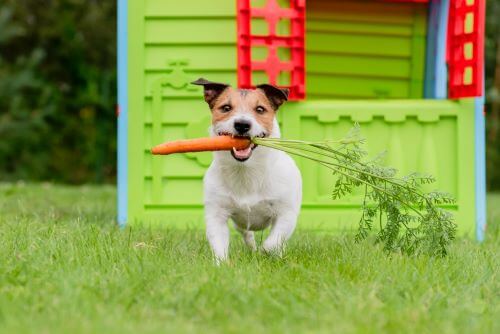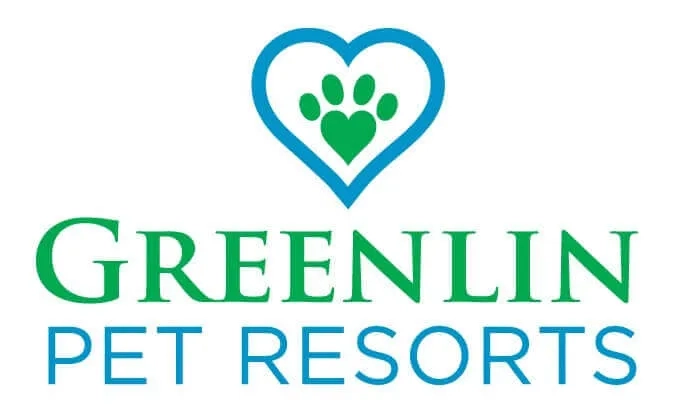10 Dog-Friendly Veggies to Prepare for Your Dog

Do you worry about your dog getting sick of eating the same food every day? You can always add supplements, liquid broths, or even veggies! Brighten up their bowls with produce that you may be able to find in your fridge already.
However, before starting your culinary journey, be aware that some fruits and vegetables are toxic to dogs. On the other hand, many are very nutritious for our furry friends! It is essential to seek safety information on any new food you add to your dog’s diet.
Read on to learn about some of the best ways to prepare veggie-rich meals for your pooch and what vegetables are best to add to a dog’s diet.
How To Prepare Vegetables For Your Dog
Dog-safe veggies can be prepared a few ways but should never be offered with any additives like sodium, butter, or seasoning. Many canned vegetables have high levels of sodium, and pre-cooked veggies typically come in a solution containing lots of butter or oil.
Some vegetables are unsafe to eat when raw, so the rule should be to cook everything unless research tells you otherwise. Also, speak to your vet about any diet changes, especially if you notice any new symptoms once vegetables or other substances are introduced.
The best way to confidently give your dogs vegetables is to prepare them yourself. Not only will this help you feel better about diversifying your dog’s diet, but they’ll be able to taste the love in your home-cooked food! Remember to leave out things humans crave, like salt, seasonings, or added oils and fats.
Blanching
One of the most common cooking methods for dog-safe vegetables is to blanch them before serving. Blanching is a technique where you submerge the veggies in boiling water for between 1-5 minutes and then quickly transfer them to an ice bath. The cold water will stop the cooking process and keep the vegetables at a perfect crunchy consistency to eat.
Steaming
If you don’t want to submerge the veggies in water, you can steam them by adding about an inch or two of water to a pot and letting the steam tenderize the veggies from atop a steaming device inside. It is optional to transfer these vegetables to an ice bath, but it is important to never give hot vegetables to your pup! Wait until the food has cooled to room temperature, then add to their meal.
Freezing
After you cook your vegetables, regardless of your method, freezing them is a great way to ensure freshness for larger batches. Just let them thaw for a few minutes while you prepare the rest of your dog’s meal, and they’ll be ready by the time you serve.
These Are 10 Of The Top Dog Safe Vegetables To Add To Mealtime
Look to any of the best dog-safe vegetables below for an excellent way to add fiber, nutrients, and that all-important CRONCH to your dog’s daily meals.
1. Kale
Kale has a dense nutrient portfolio, including vitamins A & K, iron, magnesium, calcium, and potassium. These can collectively help keep their bones strong, detoxify their liver, fight off infections, and strengthen colon health and eyesight. The wide variety of benefits puts kale at the top end of many dog parents’ lists for vegetable additives.
2. Carrots
Want a great hack for cheap dental toys? Freeze a couple of large carrots and let your dog gnaw on those instead of expensive dental chews! Unlike some veggies, carrots are safe to eat raw and can be easily crunched even when frozen. This makes them a cheap, easy, and fun way for your dog to take care of their teeth. Carrots also have high levels of fiber and potassium to keep your dog’s gut health happy.
3. Broccoli
Broccoli is safe to eat raw or cooked, as long as it’s unseasoned. It offers a similar nutrient profile to kale but has high levels of vitamin C to boost their immune system, anti-inflammatory properties, and folic acid to keep cells healthy (great for pregnant pups!).
4. Sweet Potato
All vegetables should be given in moderation (no more than 20% of their meal), but potatoes and sweet potatoes should be rationed more sparingly. While sweet potatoes offer rich levels of vitamins A, B6, C, iron, and much more, they contain a compound called solanine which is toxic to dogs. When cooked, levels of this toxic compound severely decrease, making them safe to eat when the time is right. Most pet parents offer sweet potatoes when their pup has an upset tummy because the rich vitamins, fiber, and starch can help neutralize common gut issues.
5. Spinach
Not only is spinach a great source of vitamins A, B, C, and K, but it can also support healthy heart functions and immune systems in dogs. This leafy green can also stabilize normal energy levels for a balanced day.
6. Green Beans
For pups on a weight loss diet, green beans are high in fiber but low in calories. This is the perfect equation for feeling full with less food intake! The veggie is high in many vitamins and minerals, but will also help keep your dog full longer. Best of all, they can be crunched raw or cooked lightly to be incorporated in any meal.
7. Beets
Red beets have amazing properties such as their anti-inflammatory, cancer-fighting, and immune-boosting qualities. Micronutrients like manganese, folate, fiber, and potassium help balance your dog’s diet. Beets are recommended by vets as an additive if your dog is experiencing fur loss or dry skin.
8. Peas
Peas are one of the most common vegetable additives that you’ll see in commercial dog food because of their high protein, iron, and zinc levels. They also tend to dehydrate well and remain stable in all sorts of preparations. Peas are great because they contain lutein, which is an antioxidant for good skin/coat, eye, and heart health.
9. Celery
Celery is mainly made up of water, which is a fun way to boost your dog’s hydration levels (maybe as a treat on a walk!). Aside from fiber and vitamins like A & K, celery is also proven to help freshen bad doggy breath!
10. Pumpkin
While pumpkin is technically a fruit because it is in the winter squash family, its nutritional profile follows that of a vegetable and can be very beneficial to your dog’s health. Pumpkin is known to aid in digestion, but is also high in vitamin E, which is powerful against oxidative damage.
Some Produce Is TOXIC To Dogs
Not all vegetables are safe for dogs to consume, which is why it’s important to research anything you wish to add to their diet.
Foods like onion and garlic are detrimental to your dog’s iron levels and can be fatal if ingested, causing harm to their kidneys. Avocados, grapes/raisins, mushrooms, and chives should also be kept away from your beloved furbabies. The pits of fruits like peaches and cherries contain cyanide, which is harmful to pets and humans, too! Your pupper just has a higher chance of accidentally snacking on one.
Always prepare fresh produce carefully around your dogs!
Greenlin Pet Resorts Will Care For Your Dog’s Mealtime Habits And Restrictions
Your pup is safe with us! At Greenlin Pet Resorts, we understand that what your dog eats is essential to their functional lifestyle, so we take feeding instructions very seriously.
When your pup is boarding with us while you’re away or staying all day to train with us and attend the dog daycare program, we will take all necessary precautions to ensure that their food is just how mom or dad makes it!
You can learn more about our feeding procedures on our care pages. Contact one of our locations if you have further questions about how we care for your pups!
